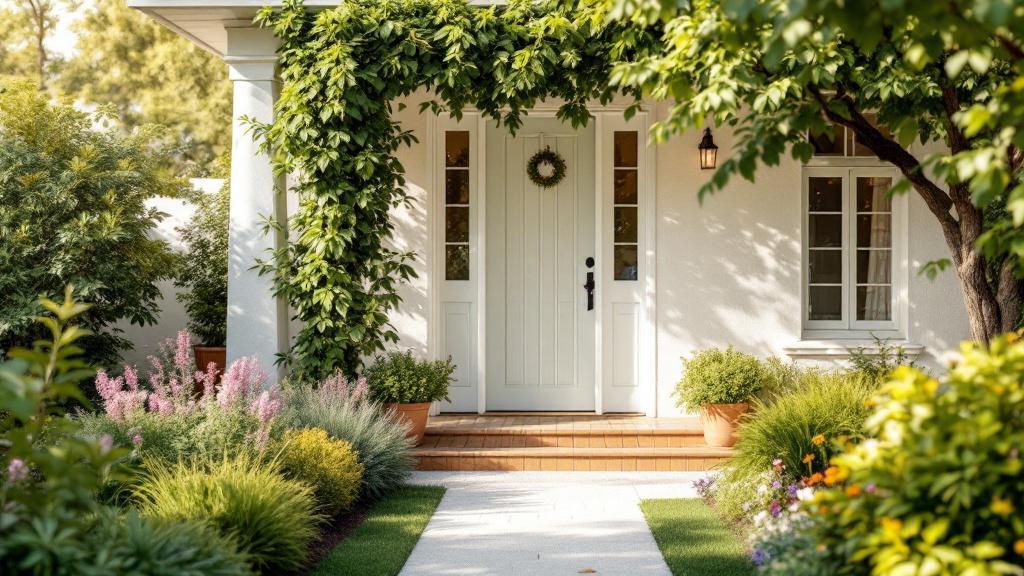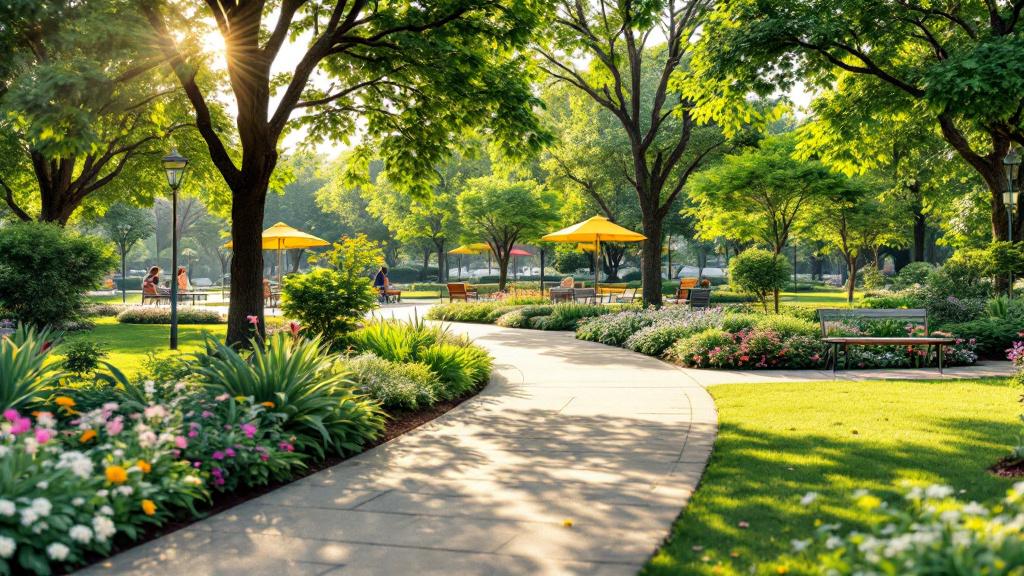Understanding Safe Home Environments for Senior Care
Create safe home environments for senior care! Discover essential tips to safeguard senior well-being, from kitchen safety to emergency preparedness.
.jpg)
Understanding Senior Care at Home
When it comes to senior care, creating a safe home environment is of utmost importance. A safe home not only minimizes the risk of accidents and injuries but also promotes the overall well-being and independence of seniors. In this section, we will explore the importance of safe home environments for seniors and the challenges they may face in home settings.
Importance of Safe Home Environments
A safe home environment is essential for seniors as it allows them to maintain their independence and age in place comfortably. By addressing potential hazards and implementing safety measures, caregivers can create a secure space that promotes physical and emotional well-being. Some key reasons why safe home environments are vital for seniors include:
- Preventing accidents and injuries: Seniors are more susceptible to accidents, such as falls, due to factors like reduced balance, vision changes, and mobility limitations. A safe home environment helps reduce the risk of these incidents, minimizing the chances of fractures, concussions, and other injuries.
- Promoting independence: Seniors value their independence and desire to remain in their own homes for as long as possible. A safe home environment allows them to navigate their living space with confidence, perform daily activities independently, and maintain a sense of autonomy.
- Enhancing emotional well-being: Feeling safe and secure in their own home is crucial for seniors' emotional well-being. By eliminating potential hazards and implementing safety measures, caregivers can provide a comforting and stress-free environment that promotes peace of mind and reduces anxiety.
Challenges Faced by Seniors in Home Settings
While home is generally seen as a place of comfort and familiarity, seniors may encounter various challenges in their living space. Some common challenges faced by seniors in home settings include:
- Physical limitations: With age, seniors may experience physical limitations that affect their mobility, balance, and strength. These limitations can make it difficult to navigate the home safely, perform daily tasks, and access certain areas or items.
- Cognitive changes: Cognitive changes associated with aging, such as memory loss and confusion, can pose challenges in a home environment. Seniors may struggle with remembering to take medications, operating household appliances safely, or identifying potential hazards.
- Environmental hazards: Homes can harbor various hazards that pose risks to seniors, such as slippery floors, poor lighting, cluttered pathways, and uneven surfaces. These hazards can increase the likelihood of falls, burns, and other accidents.
Understanding the importance of safe home environments and the challenges seniors may face allows caregivers to proactively address these issues. By identifying potential hazards and implementing appropriate safety measures, caregivers can create an environment that supports the well-being and independence of seniors in their own homes.
Identifying Potential Hazards
To create a safe home environment for senior care, it is essential to identify potential hazards that may pose risks to their well-being. By recognizing common home hazards and conducting a thorough assessment of safety needs, caregivers can take proactive measures to mitigate these risks and ensure a secure living space for seniors.
Common Home Hazards for Seniors
There are several common hazards that can pose dangers to seniors within their own homes. These hazards include:
- Tripping and Falling: Loose rugs, cluttered pathways, and uneven surfaces can increase the risk of trips and falls, which can lead to severe injuries.
- Poor Lighting: Insufficient lighting can make it difficult for seniors to see clearly, increasing the chances of accidents and missteps.
- Lack of Handrails and Grab Bars: Without proper handrails and grab bars, seniors may struggle with balance and stability, particularly on stairs and in the bathroom.
- Slippery Floors: Surfaces that are wet or slippery, such as bathrooms and kitchens, can result in slips and falls, potentially causing significant harm.
- Unsafe Furniture: Unstable or improperly positioned furniture can pose hazards, especially for seniors with mobility issues.
Assessing Home Safety Needs
Assessing the safety needs of a senior's home is a crucial step in creating a safe living environment. By conducting a thorough evaluation, caregivers can identify specific areas that require attention and implement necessary modifications. Here are some key factors to consider during the assessment:
- Mobility and Accessibility: Evaluate the ease of movement within the home, paying attention to doorways, stairs, and hallways. Determine whether modifications such as ramps or stairlifts are necessary to enhance accessibility.
- Bathroom Safety: Assess the bathroom for potential hazards, such as slippery floors and inadequate grab bars. Consider installing non-slip mats, grab bars, and shower seats to improve safety.
- Kitchen Safety: Examine the kitchen area for potential risks like sharp utensils, hot surfaces, and hard-to-reach items. Implement measures like organizing items at reachable heights and using safety devices like stove guards to prevent accidents.
- Lighting and Visibility: Ensure that the home has adequate lighting throughout, especially in areas prone to falls. Consider installing motion-sensor lights or nightlights to improve visibility during nighttime.
- Emergency Preparedness: Evaluate the home's emergency preparedness by identifying accessible exits, checking smoke detectors, and creating a clear emergency contact list. Discuss and practice emergency evacuation plans with the senior.
By identifying common home hazards and conducting a comprehensive assessment, caregivers can take proactive steps to enhance the safety of the home environment for seniors. This not only reduces the risk of accidents and injuries but also promotes peace of mind and well-being for both the seniors and their caregivers.
Creating a Safe Living Space
When it comes to caring for seniors at home, creating a safe living environment is of utmost importance. A safe home can help prevent accidents and injuries, ensuring the well-being of seniors. In this section, we will explore three key aspects to consider when creating a safe living space: lighting and visibility, flooring and furniture considerations, and accessibility and mobility aids.
Lighting and Visibility
Proper lighting is essential for senior safety at home. Adequate lighting helps seniors see clearly, reducing the risk of falls and accidents. Here are some factors to consider:
- Natural Light: Ensure that windows are unobstructed to allow natural light to enter the living space during the day. Natural light not only brightens the environment but also positively affects mood and overall well-being.
- Artificial Lighting: Install sufficient artificial lighting, including ceiling lights, lamps, and task lighting, to provide adequate illumination throughout the home. Consider using brighter bulbs or LED lights to enhance visibility.
- Light Switches: Place light switches at accessible heights and ensure they are easy to reach from different areas of the home, including hallways, bedrooms, and bathrooms.
- Nightlights: Install nightlights in hallways, bedrooms, and bathrooms to help seniors navigate safely during nighttime.
Flooring and Furniture Considerations
Choosing the right flooring and furniture is crucial for creating a safe living space for seniors. Here are some important considerations:
- Flooring: Opt for non-slip flooring materials that provide good traction, such as carpet with low pile, rubber, or nonslip vinyl. Avoid rugs or mats that can cause tripping hazards.
- Furniture Placement: Arrange furniture to allow easy movement and clear pathways throughout the home. Ensure that there is enough space to maneuver mobility aids, such as walkers or wheelchairs.
- Stable Furniture: Select furniture with sturdy construction that provides stability when seniors sit or stand. Avoid furniture with sharp edges or slippery surfaces that may pose a risk of injury.
Accessibility and Mobility Aids
Creating an accessible living space is essential for seniors with mobility challenges. Consider the following accessibility and mobility aids:
- Handrails and Grab Bars: Install handrails and grab bars in areas prone to slips and falls, such as staircases, bathrooms, and hallways. These provide stability and support for seniors when moving around the home.
- Ramps and Stairlifts: If the home has stairs, consider installing ramps or stairlifts to facilitate safe and easy movement between different levels. These aids can significantly improve accessibility for seniors with limited mobility.
- Elevated Toilet Seats and Shower Chairs: To enhance bathroom safety, consider using elevated toilet seats and shower chairs. These aids promote independence and reduce the risk of falls while using the bathroom.
By paying attention to lighting, flooring, furniture, and accessibility aids, you can create a safe living space for seniors. Remember to consider the specific needs and abilities of the individuals in question and make adjustments accordingly. Regularly assess and update the home environment to ensure it remains safe and supportive for senior care.
Kitchen Safety Measures
The kitchen is one area of the home where safety measures are particularly important for seniors. Implementing proper safety precautions in the kitchen can help prevent accidents and ensure a safe environment for seniors to prepare meals. Here are three key areas to focus on when creating a safe kitchen space for senior care.
Fire Safety Precautions
Fire safety is of utmost importance in the kitchen, as cooking-related fires can be particularly dangerous. To minimize the risk of fires, it's essential to have fire safety measures in place.
- Install smoke detectors in the kitchen and regularly test their functionality.
- Keep a fire extinguisher within reach and ensure that it is regularly inspected and maintained.
- Avoid wearing loose-fitting clothing while cooking, as it can easily catch fire.
- Never leave the kitchen unattended while cooking and always keep pot handles turned inward to prevent accidental spills.
- Encourage the use of timers to remind seniors when food is cooking to avoid forgetting about it.
Proper Storage and Organization
Maintaining a well-organized kitchen can greatly contribute to safety and ease of use for seniors. Proper storage and organization help minimize the risk of falling objects, reduce clutter, and ensure that items are easily accessible.
- Store frequently used items in easily reachable cabinets or drawers to avoid the need for excessive reaching or bending.
- Keep heavy items on lower shelves to prevent them from falling and causing injuries.
- Use non-slip shelf liners to secure items in place and prevent them from sliding.
- Regularly declutter the kitchen and remove unnecessary items to create a more spacious and hazard-free environment.
Assistive Devices in the Kitchen
The use of assistive devices can greatly enhance safety and independence in the kitchen for seniors. These devices are designed to aid in various tasks and reduce the risk of accidents.
By implementing these kitchen safety measures, seniors can feel confident in their ability to navigate and use the kitchen safely. Regularly reassessing the kitchen environment and addressing any potential hazards can further enhance the safety and well-being of seniors in their home.
Bathroom Safety Essentials
The bathroom can be a hazardous area for seniors due to its slippery surfaces and potential for falls. Implementing safety measures in the bathroom is essential to ensure the well-being of seniors. Here are some key aspects to consider when it comes to bathroom safety for seniors: slip and fall prevention, grab bars and handrails, and shower and toilet modifications.
Slip and Fall Prevention
Slips and falls are common bathroom accidents that can cause serious injuries for seniors. To prevent such incidents, it's important to take steps to enhance slip resistance in the bathroom. Some measures to consider include:
- Using non-slip mats or rugs on the bathroom floor and in the shower or bathtub area.
- Applying non-slip adhesive strips or decals to the floor of the shower or bathtub.
- Avoiding the use of throw rugs or mats that can become tripping hazards.
- Ensuring that the bathroom floor remains dry and free from water spills.
Grab Bars and Handrails
Installing grab bars and handrails in the bathroom is crucial for seniors to maintain balance and stability. These supportive structures can be strategically placed in areas where seniors may need assistance, such as near the toilet, bathtub, and shower. Here are some considerations for grab bars and handrails:
- Choose grab bars and handrails that are sturdy and able to support the weight of the senior.
- Install bars and rails at appropriate heights for easy reach and grip.
- Ensure that grab bars and handrails are securely mounted to the wall, using professional installation if needed.
Shower and Toilet Modifications
Making specific modifications to the shower and toilet areas can greatly enhance safety for seniors. Consider the following modifications:
- Install a shower seat or bench to provide a stable place to sit while showering.
- Use a handheld showerhead to allow seniors to have more control and flexibility during bathing.
- Consider installing a raised toilet seat or a toilet frame with armrests to aid in sitting down and standing up.
By implementing these bathroom safety essentials, you can create a safer environment for seniors. It's important to assess the specific needs and capabilities of the senior and make modifications accordingly. Consulting with professionals who specialize in senior home safety can provide valuable insights and guidance in creating a bathroom that promotes independence and reduces the risk of accidents.
Emergency Preparedness and Support Systems
Ensuring the safety and well-being of seniors in their homes goes beyond creating a secure physical environment. It is equally important to have emergency preparedness plans and support systems in place. This section will cover three key aspects of emergency preparedness and support systems for senior care at home: emergency contact information, medical alert systems, and caregiver support resources.
Emergency Contact Information
Having readily accessible emergency contact information is crucial in case of any unforeseen situations or emergencies. Seniors and their caregivers should compile a list of important contact numbers and keep them in a visible and easily accessible location. This should include:
- Local emergency services (e.g., ambulance, fire department, police)
- Primary healthcare provider
- Family members or close friends who can be contacted in case of emergencies
- Poison control hotline
It is also advisable to include any specific medical information, such as allergies or chronic conditions, on this list. In the event of an emergency, having this information readily available can help first responders provide appropriate care.
Medical Alert Systems
Medical alert systems are valuable tools that provide an added layer of safety and peace of mind for seniors living at home. These systems typically consist of a wearable device, such as a pendant or wristband, that can be activated to summon help in case of an emergency. When activated, the device sends an alert to a monitoring center, which then contacts the appropriate emergency services or designated caregivers.
Seniors and their caregivers should explore different medical alert system options to find one that suits their needs. Some systems offer additional features such as fall detection or GPS tracking, which can be particularly beneficial for seniors who are at higher risk of falls or have a tendency to wander.
Caregiver Support Resources
Caring for seniors at home can be a challenging task, both physically and emotionally. It is important for caregivers to have access to support resources to help them navigate their caregiving responsibilities. These resources can provide valuable guidance, assistance, and respite for caregivers. Some caregiver support resources include:
- Support groups: These can be in-person or online communities where caregivers can connect with others facing similar challenges, exchange experiences, and seek advice.
- Respite care services: These services provide temporary relief for caregivers, allowing them to take breaks and attend to their own well-being.
- Home health agencies: These agencies can provide professional caregivers who can assist with various aspects of senior care, such as personal care, medication management, and companionship.
- Counseling services: Caregivers may benefit from counseling or therapy services to help manage stress, cope with emotions, and develop effective caregiving strategies.
By having access to emergency contact information, utilizing medical alert systems, and tapping into caregiver support resources, seniors and their caregivers can create a safer and more supportive home environment. These measures contribute to the overall well-being and security of seniors aging in place.
Sources
https://altreshomecare.com/senior-home-safety
https://success.care/creating-a-safe-home-environment-for-seniors
https://myassuredhomenursing.com/aging-in-place-safe-and-comfortable-home-environment-for-seniors
https://www.gahc.co.in/tips-for-creating-a-safe-home-environment-for-seniors

How to Plan for Long-Term Home Care Services

How Home Team Helps Families Make Informed Care Decisions

How Home Team's Caregivers Provide Peace of Mind for Families



